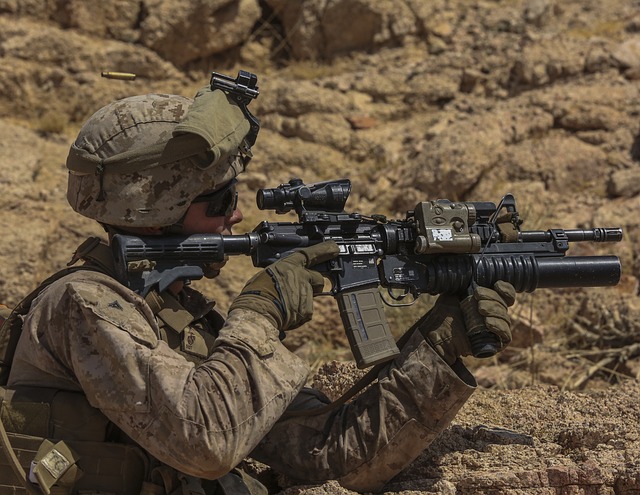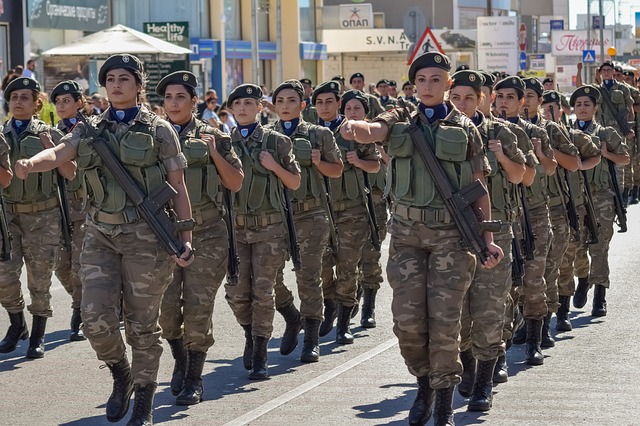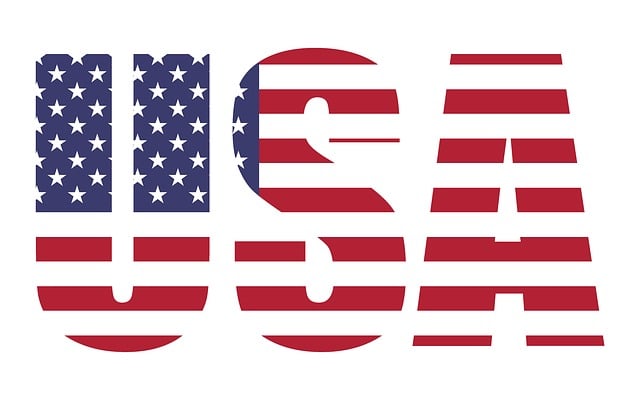The 1st Cavalry Division Flag is a significant historical and symbolic artifact representing over a century of the U.S. Army's most decorated division's valor and tradition. Originally embodying the cavalry's mounted warrior identity, it has evolved to honor today's mechanized infantry and armored brigades, standing for courage, honor, and the indomitable spirit of the division. The flag serves as a tangible link to the past and a source of inspiration and unity for soldiers, encapsulated in their motto "First Team." It is flown alongside the national flag on federal buildings and on military bases to signify the division's commitment to the United States and the historical significance of the units stationed there. The 1st Cavalry Division Flag is also a symbol of national pride, prominently displayed at significant ceremonial events like presidential inaugurations and military parades. However, its presence on government buildings and military bases sparks a debate about its role as a military symbol in public spaces, balancing the recognition of military heritage with inclusivity and respect for diverse societal views. The context of its display and fostering dialogue to accommodate various perspectives are crucial in maintaining the flag's honor while ensuring it represents all citizens' values within the evolving social landscape.
The presence of military flags on government buildings and military bases is a topic rich in tradition and symbolism, reflecting a nation’s pride and respect for its armed forces. Among these symbols stands the 1st Cavalry Division Flag, an emblem deeply entrenched in American military history and a beacon of valor and sacrifice. This article delves into the significance of the 1st Cavalry Division Flag, outlines display protocols on public and federal lands, examines its role in national ceremonies, and addresses the nuanced debates surrounding the display of such powerful symbols. Join us as we explore the intersection of military heritage and public representation through the lens of one of the most storied divisions in U.S. history.
- The Significance of the 1st Cavalry Division Flag in Military History and Symbolism
- Display Protocols for Military Flags on Government Buildings and Military Bases
- The Role of the 1st Cavalry Division Flag in National Ceremonies and Events
- Controversies and Considerations Surrounding the Display of Military Symbols in Public Spaces
The Significance of the 1st Cavalry Division Flag in Military History and Symbolism

The 1st Cavalry Division Flag carries deep significance within the tapestry of military history and symbolism, representing one of the most storied and decorated divisions in the United States Army. In its more than a century of service, the division has been involved in numerous conflicts, from World War I to contemporary operations. The flag itself, with its iconic emblem of a horseman bearing a lance, is emblematic of the cavalry’s storied past as mounted warriors, though now the division is composed of mechanized infantry and armored units. This flag has flown during pivotal moments, symbolizing courage, honor, and indomitable spirit. It is a rallying point for soldiers who view it as a tangible link to the traditions and values of the cavalry, reminding them of their lineage and the sacrifices of those who came before. The 1st Cavalry Division Flag’s presence on government buildings and military bases serves not only as a historical artifact but also as an inspiration to current and future generations of service members. It is a constant reminder of the division’s motto, “First Team,” emphasizing unity and esprit de corps among its ranks, and it underscores the enduring legacy of the 1st Cavalry Division in America’s military heritage.
Display Protocols for Military Flags on Government Buildings and Military Bases

The display protocols for military flags, such as the esteemed 1st Cavalry Division Flag, on government buildings and military bases are governed by strict guidelines that honor the heritage and values they represent. These protocols dictate the manner in which the flag should be hoisted, lowered, and folded, reflecting both respect for the emblematic symbol and adherence to tradition. On government buildings, the 1st Cavalry Division Flag is typically flown alongside the national flag, signifying the division’s service under the authority of the United States government. In the case of military bases, the prominence of the 1st Cavalry Division Flag is a testament to the units stationed there and their storied history. The protocol ensures that this flag is displayed with due respect, in accordance with the standards set forth by the Department of Defense and local governing bodies. These guidelines ensure that the flag is treated with the dignity it deserves, symbolizing the bravery and dedication of those who have served under the 1st Cavalry Division. The proper display of military flags like the 1st Cavalry Division Flag fosters a sense of unity and pride within the military community and acknowledges the importance of their service to the nation.
The Role of the 1st Cavalry Division Flag in National Ceremonies and Events

The 1st Cavalry Division Flag holds a significant place in national ceremonies and events, symbolizing the bravery and tradition of America’s premier active combat unit, also known as “The Old Iron First.” This emblematic flag has been present at numerous high-profile commemorations, including presidential inaugurations and military parades. Its presence is not merely decorative but serves to inspire and unite those who witness the display of valor and dedication it represents. The flag’s history intertwines with the storied past of the division, which dates back to World War I. Each time it unfurls at a ceremony, it pays homage to the veterans who have served under its emblem and to the ideals of courage, loyalty, and honor that the 1st Cavalry Division upholds. The flag’s prominent role in these events underscores the division’s contributions to America’s military history and its ongoing commitment to national defense, making it an integral component of the country’s official functions.
Controversies and Considerations Surrounding the Display of Military Symbols in Public Spaces

The display of military symbols, such as the iconic 1st Cavalry Division Flag, on government buildings and military bases is a topic fraught with complexities and varying viewpoints. On one hand, these symbols often represent valor, sacrifice, and historical significance, serving as tangible reminders of the bravery exhibited by service members. They can foster national unity and serve as educational tools for the public, providing insights into the military’s role in safeguarding the nation’s interests. However, their presence can also spark controversies, particularly when the symbols are displayed on public lands where diverse populations with differing perspectives coexist.
Critics argue that the prominence of military symbols may be perceived as a form of government endorsement of militarism or particular military conflicts, potentially alienating segments of the population who oppose war or have different ideological beliefs. Additionally, there are concerns about the implications such displays might have on the separation of military and state institutions. The use of public spaces for these purposes raises questions about inclusivity, free speech, and the representation of all citizens’ values. Balancing the respect for military heritage with the sensitivities of various communities is a delicate task that requires careful consideration by policymakers and stakeholders alike. The context in which the 1st Cavalry Division Flag or similar symbols are displayed becomes crucial, as does the dialogue between different groups to reach an understanding that honors the past without overshadowing the present and future diverse fabric of society.
The 1st Cavalry Division Flag holds a significant place in both the military’s storied history and the broader symbolism it represents for the United States. Its presence on government buildings and military bases serves as a lasting testament to the valor, dedication, and service of those who have served under its emblem. This article has explored the flag’s historical significance, the protocols surrounding its display, its role in significant national ceremonies, and the nuanced discussions that surround the use of military symbols in public spaces. It is clear that while the flag honors a distinguished legacy, its display must be managed with respect for diverse perspectives and the principles of inclusivity that define our nation. Balancing historical tradition with contemporary values ensures that the 1st Cavalry Division Flag remains a unifying symbol rather than a point of division. As such, ongoing dialogue and careful consideration are essential to maintaining its integrity and relevance in public displays.
